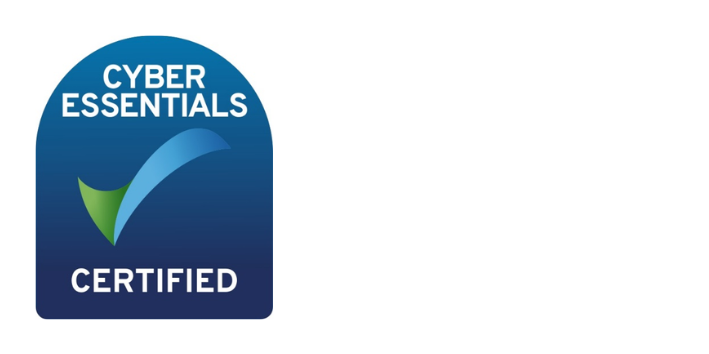- May 6, 2020

Organisational Resilience – Learning lessons from Covid 19
GreenKite Chair Dean Fathers shares his thoughts on Organisational Resilience during Covid 19
The world is in the grip of the Covid-19 pandemic which has disrupted life and fundamentally changed the way business has been conducted at a quite unprecedented speed.
It has taken less than a month to transform the way business is traditionally done to a model of delivery that would have been considered visionary in concept not many months ago. Yet in response to the threat of the Covid-19 virus humanity has achieved just that. In many cases organisations have had to adopt unplanned procedures, disregard policies and adopt new working environments, sending several million of us to work from home and develop a new approach to leadership. The lessons learned will be many and through a series of papers related to organisational resilience delivered through the AFM newsletter I would like to share them with you. I will however argue in later papers that these lessons are not necessarily new and a pandemic as we are experiencing it didn’t come without warning to the many who practice strategic resilience scenario planning.
Running or managing a Financial Mutual is challenging enough but when you have to lead it from in quarantine, no longer able to rely upon those familiar face-to-face human interactions, the normal structures, policies and working practices and routines you have developed and become accustomed to, it must feel very challenging indeed. Instead of normality leaders are faced with an increasing array of bewildering and taxing demands. Where ambiguity, complexity, uncertainty and volatility increases our feeling of psychological safety decreases. Good leaders in these circumstances do two things, only one of which I plan to share fully with you today because in stressed situations people always forget that: “when you are up to your neck in crocodiles, the purpose of the exercise is to drain the swamp”. I will revisit purposeful or virtuous leadership another day, as it a key strategic differentiator in it’s own rights and one that leaders of mutual organisations should place particular focus on if they are to build strong, competitive and sustainable organisations that are resilient for the future.
Pressurised conditions like a swamp full of crocodiles exacerbate anxiety and when you are leading remotely can create a heightened sense of dislocation, isolation, perhaps a sense of paranoia and in many, an increased sense of a need for control. The emotional and rational responses of leaders need to be reflected in the light of the need for continued performance, financial return, the delivery of key outcomes and also of the health and well-being of both the leaders and employees alike.
Redefine and manage expectations and outcomes. Traditional organisational structures, norms and working practices are based on rational hierarchical models where direct supervision has been achieved by the proximity of employees in the workplace. Regulators have placed proximinal requirements on organisations, insisting on appropriate organograms being available demonstrating roles and clear lines of responsibility and have further mandated competence frameworks be populated to attest and demonstrate capability and rightful accountability. Cultural socialisation challenges much that can be codified in standard formats. The latter states what we do in this financial institution, the former what we really do when the boss isn’t here. Remote working means that leaders become increasingly reliant therefore on the morals and values of those they serve. Trust becomes an essential value and without the direct supervision capability that comes from working together in the same office, under the same working conditions, with the same work schedule it is a value that is easily lost. In a remote environment, leaders must help their teams shift to asynchronous work patterns and allow for a diversity of needs to redefine and reset expectations for how work gets done, letting go of when and how tasks are accomplished, allowing each individual to accomplish their responsibilities on their own terms. This means focusing on the virtues of the organisation to win through, define the nature of the results delivered and offer greater flexibility.
Communicate, communicate, communicate. Evidence suggests that shorter communication cycle times are more effective in building and sustaining individual and team morale so consider how effective two directional engagement can be developed. Social digital media is a simple system to form the basis for regular contact and current best practice suggests that employees shouldn’t go for more a half day without being checked in on. Digital huddles are another technique to enhance engagement, ideally using video links like Zoom and Microsoft Teams (other technologies are available), and consider using these events as an opportunity for a team member to demonstrate their leadership of a particular field or topic so as to grow their capability. Prioritise the importance of these meetings over other tasks ensuring everyone is both present and mindful ensuring that individuals receive the message that the team, even though it is virtual, is of vital importance.
Remember uncertainty creates anxiety and in the absence of communication the nattermatter and gossip of others will fill the void. Ensure you avoid an information vacuum within your team. Communicate regularly even if there is no new information to share. It is vital to maintain transparency when faced with a crisis with frequent updates being the ultimate expression of good faith, empathy, and a genuine concern for your team members well-being.
Learn quick learn fast. The virtual world is a haven for learning and the new digital technologies are a perfect play ground for learning school time lessons. As above, encourage individuals to share their daily learning maybe for just five minutes at the end of each virtual meeting. Micro learning every day over a long period becomes macro learning that can significantly differentiate an organisation and deliver a real competitive advantage. Turn mistakes into learning opportunities by building a trusted environment where criticism is seen as constructive and always thank people for their trust in sharing their mistakes and for learning lessons. Consider capturing these lessons among team members in writing so as to allow the team to identify key themes and topics for training to other teams in the organisation. If interested allow team members to lead on the training, making them ambassadors for your team demonstrating your trust in them as a valued member of it.
Parallel mentoring and learning buddies. We live in a diverse world where skills, capabilities and valuable experience lies in every individual. Traditional mentoring models rely on hierarchical structures being in place. Remote leadership prevents such structures from working effectively and if enforced can become both exhausting and time consuming for the leader. Consider therefore distributing responsibility so that individuals are allocated learning buddies with set learning objectives. Parallel (often also known as reverse mentoring) should also be considered. All leaders should mentor and be mentored so as to increase the breadth of their world view and not just in regards to a specific task or performance objective. This creates strong bonds of mutual respect and trust as support is developed in all directions. It also protects leaders from emotional isolation, builds their personal resilience and helps their well being.
Narrative and story telling. Leaders working remotely will lack the benefit of visual cues in regards to how people are feeling and consequently will have to develop new emotional intelligence techniques. Written and verbal narrative can provide context and tone as well as patterns of communication as proxy indicators. Leaders should pay particular close attention to the rate, volume, pitch, and inflexion of voice communication; and any physical gestures in video communication. Changes in these patterns help identify early health related matters like stress, anxiety and depression and indicate that a team member may need some professional or clinical support. Listen also to the stories people are telling. Stories are rich in values based information and an indicator of the cultural health of the team.
Provide hope, practice realism and tackle fear. “Without hope they shall wither on the vine”. Leaders who demonstrate hopefulness and confidence about the future also provide meaning and purpose (remember the swamp) especially under stressful conditions. Hope without a sense of reality however can soon lose a leader their credibility. You have to practice both and consequently leaders need to either enable their team to break down the hope into meaningful and acceptable bite sized chunks or show their team members where the vision has been practiced before with evidence of a successful conclusion. The former drives innovation when in the face of adversity. The latter drives adaptation. Fear can be the downfall of both so leaders must spend time making fear a legitimate emotion to feel so that it can be discussed openly, mitigated for and turned into positive energy. Fear in my experience has never appeared on a corporate risk register yet is one of the greatest corporate risks, especially in the high stakes world of insurance and financial services.
Turn stress into a positive force for good. We all need pressure but none of us need stress. Pressure is when capacity and capability are in equilibrium with demand. Stress is when demand exceeds capacity and capability and eustress is when capacity and capability exceeds demand. The symptoms of stress and eustress are the same. The cure completely the opposite. To turn the stress of situations into positive energy leaders must first make it clear that the health and well-being of their team is their chief concern. Take time therefore to monitor your engagement periodically and assess how stressed your team members are in regards to this important balancing act and identify what might be impacting on their individual psycholgical safety: their levels of connectedness to each other and the organisation’s purpose; their levels of hope and optimism; their sense of identity and meaning; and their perceived levels of empowerment are all important elements to consider.
Where individuals and teams feel engaged, safe to learn, contribute and challenge without fear of being bullied embarrassed, marginalised, or punished in some way, they continue to perform, contribute, and perhaps, most importantly compete even when faced with the adversity of a complex and uncertain world. When organisations have individuals and teams led in this way, even at a time like this with Covid-19 still at pandemic levels, then they must most likely be more resilient. Organisational resilience however has more to it than just these few factors and therefore further elements intrinsic to a whole system understanding of organisational resilience will be explored in future articles.





